Everything you should know about the most famous handbag in the world
CNA Lifestyle reveals the secrets behind the Chanel Flap and explains why this iconic accessory is so much more than just a luxury handbag to women. In partnership with Chanel.
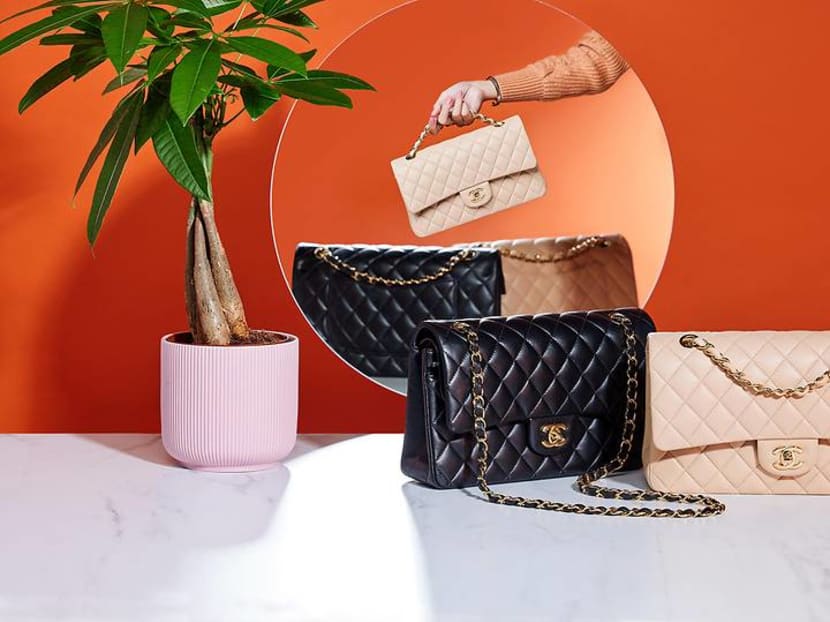
The 11:12 bags in lambskin leather, (on the model) cashmere cardigan and Coco Crush bracelet in white gold and diamonds, all from Chanel. (Photo: Aik Chen, styling: Jasper Loh)
Few things in fashion, or indeed the world, have made an imprint as deep as the impression the Chanel Classic Flap has left on women. The handbag enjoys iconic status unlike that of any other luxury accessory – it is not merely a fashion statement or status symbol, but one that has come to carry special significance in popular culture.
So pervasive is its influence that almost everyone – fashion-conscious or not – can recognise it, while handbag addicts deem it the ultimate bag to add to their collection.
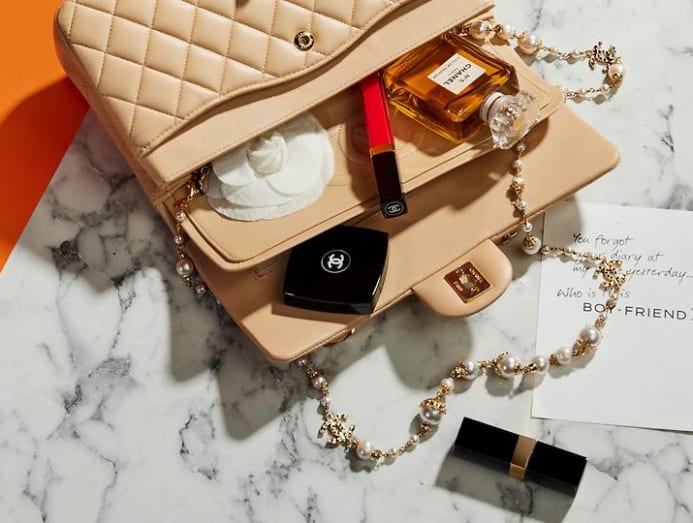
Why is the Classic Flap so wildly popular and sought-after? For those in the know, it has to do with its history and origins, the many stylistas and celebrities who have been seen with it, its versatility and functionality, and not least, its distinctively classic, elegant yet surprisingly modern design – an unmistakable mark of the legendary woman behind it.
ANATOMY OF AN ICON
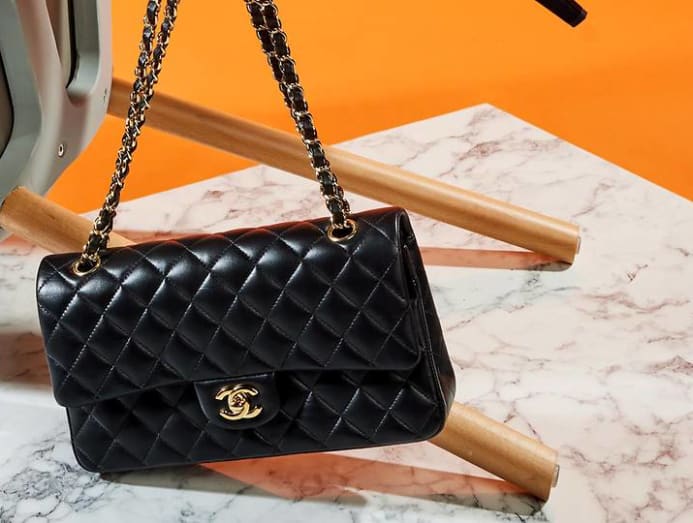
Formally christened the 11.12 bag by the brand, the Classic Flap is a reinterpretation of the 2.55 bag that was designed by Gabrielle “Coco” Chanel in February 1955 (this date explains the numbers featured in its name).
How, then, did the 11.12 get its numerical reference? It is said that it simply originated from the style code that was given to the bag model.
Introduced by Karl Lagerfeld in 1983, the 11.12 may look similar to its predecessor, but in fact carries several design features that are distinctly different. The most prominent of these is the turn-lock clasp: On the 2.55, it is rectangular, while on the 11.12, it takes the form of Chanel’s interlocking double-C logo. Notably it goes down in fashion history as the first Chanel bag that features the interlocking double-C logo.
Apart from that, the shoulder strap is also different across both models. The 2.55 is given a fully metal chain strap, while the 11.12’s strap has leather woven through the chain links.
Today, the 11.12 is available in an array of sizes, from mini to jumbo to maxi, with the medium remaining arguably one of the most popular size options.
A BAG WITH COCO CHANEL’S SPIRIT
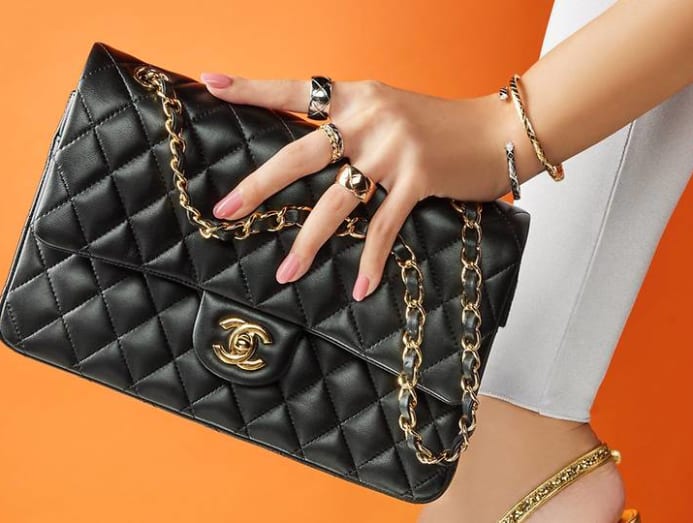
Like many other iconic fashion statements that Chanel herself designed, the 2.55, which the 11.12 is based on, was revolutionary at the time of its creation. A trend-defying design back in the Fifties, it literally turned the handbag (designed to be carried in the hand back in the day), into a wearable accessory.
“Tired of holding my bags in my hands and losing them, I added a strap and wore them over my shoulder,” Chanel once said.
With its shoulder sling, the 2.55 freed the hands of women – a design element that’s so simple yet made such a difference in its functionality. Another ingenious feature is the adjustability of the chain strap – this meant the bag could be worn at different lengths to suit the height or preference of its owner.
While maintaining the 2.55’s luxury appeal and having it crafted out of supple lamb leather that was originally the preserve of glove makers, Chanel ensured that it was functional for everyday use and not an accessory that only served an aesthetic purpose.
Yet another practical feature to be found in the bag, as well as the 11.12, of course, is the inclusion of multiple pockets. These seven compartments, thoughtfully laid out for organising a woman’s daily essentials, hide an interesting story that fans of the bag have been passing around – it is said that Gabrielle Chanel used to hide her love letters in the zip pocket located underneath the uppermost flap of the bag.
No one can really say if it’s true or not, of course, but here’s one thing we are sure of – it’s a story that certainly adds to the handbag’s allure.
THE LEGACY OF ARTISANAL CRAFT
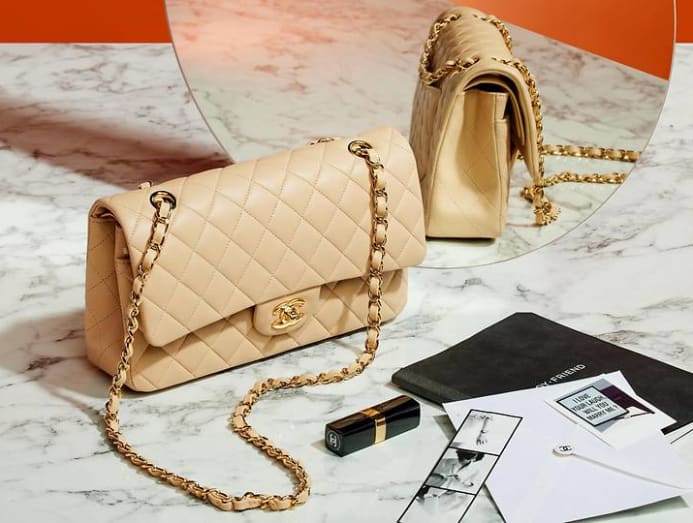
As well-known and well-loved as the 11.12 bag is these days, not everyone is aware of the level of skill with which it is made. These bags are famed for their high prices that are known to exhibit an escalating trend, of course, but there’s a reason (multiple, in fact) why it is worth the premium price tag.
The Ateliers de Verneuil-en-Halatte, one of Chanel’s prized Metiers d’art (a title that pays homage to the brand’s small specialist artisanal workshops) is where every single 11.12 bag is given its form.
According to Chanel, only artisans who have trained for four to five years and have mastered each gesture and every technique required in production are entrusted with the immense responsibility of crafting an 11.12 bag. The entire process entails 15 hours of work and up to 180 operations, each of which is to be meticulously and precisely carried out.
It all begins with the cutting of the material, whether it is leather or a seasonal fabric that is drawn from the current pret-a-porter collection. For every single bag, the ideal cutting points must be accurately pinned down so that all the pieces will meld together harmoniously. With fabrics like tweed, the motifs must be impeccably aligned for symmetry as well as to meet perfectly at the seams – no simple task, if you know how complicated some tweed patterns can be.
The bag is given its iconic diamond-shaped quilting via a “point droit de couturiere” stitching technique. The double-C logo is then emblazoned across the underside of the flap with needle and thread.
One distinctive feature of the 11.12 is how it is given structure and volume with a “bag in bag” construction technique. The entire bag is actually made by slotting one “bag” (which forms the interior) into the other (which forms the exterior) and then fusing the two together.
The two are mounted by hand, then turned the right way round using the "pique-retourne" (stitch and turn) method, which is also used by Chanel’s pret-a-porter ateliers. "Points de bride" stitches are then put in to hold the two layers firmly together.
The bag’s burgundy leather interior lining is yet another recognisable Chanel signature, one that adds an elegant element of interest to the bag and is said to represent the colour of the uniform that Gabrielle Chanel wore in the convent she grew up in.
But did you know that the lining actually began as a raspberry red before evolving to the burgundy that is used today?
Never one to overlook details, Gabrielle Chanel insisted that the bag – like the rest of her fashion designs – looked as beautiful on the inside, as it did outside.
DISTINCTIVELY DESIRABLE

The world’s most famous bag clearly has no lack of fans – whether they be celebrities or women who want to add to their wardrobe an investment accessory that will stand the test of time and trends.
Dutch supermodel Rianne van Rompaey is one of them. “Everybody, since you’re a little girl, knows what the classic Chanel bag looks like. It has such a history. And especially in fashion, every season everything changes so fast, it’s nice to see these classic bags that have been around for so long. Reinterpreted every time, but with the same DNA. It’s the most famous bag in the world. There is something of a fairy tale about it,” she said.
Without a doubt, the recognisability and timeless elegance of the 11.12 are key reasons behind its popularity and desirability. But it’s not simply just that. This bag seems to possess an unusual quality that no other luxury bag has – making it the ultimate bag that’s right at the top of many a handbag wish list.
Take it from yet another supermodel fan of the bag, Imaan Hammam, who sums this up so beautifully: “I think every girl’s biggest dream is to own a Chanel bag. I was able to buy my first Chanel bag when I was 17, and I remember saving so much money for it – it was a mini version of the 11.12, black on black, and I still have it. This bag is just very chic, elegant, very feminine. When I wear it I feel effortless and powerful.”
Now, what woman wouldn’t want the same for herself?



